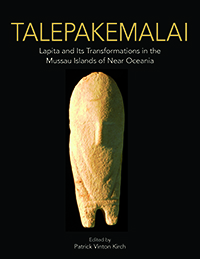Bivalves
Gastropods
Notes
Molluskan taxa recognized in the field (under column headed 'Field taxa'), species later identified within each field taxon ('Species'), pooled taxa used in quantitative analyses ('Taxon used in analyses'), and the total number of shells ('Total shells') within each field taxon counted for the excavation units used in the analyses of species composition. Note that each number may refer to several of the species listed in the 'species' column, and that a few of the listed species were identified from one or two individuals found in excavation units which were not used in quantitative analyses.
Item record
Documentation
Mollusk Methods
During excavation, mollusk shells and other invertebrate remains were collected and bagged from a total of 134 excavation units at eight sites. In total, some 2.47 metric tons of mollusk remains were collected. In our field laboratory, days were periodically set aside for processing this material. For 70 of the excavation units, mollusks were simply bulk weighed by excavation level, without further sorting to taxonomic categories. For the other 64 excavation units, however, the mollusks were sorted into taxonomic categories, for the most abundant categories typically to genus and species. The sorting was done by all members of the field team including our local Mussau assistants. Although the latter have no knowledge of Western scientific taxonomy, they are astute observers of nature and readily understood how to distinguish key morphological attributes. For some of the less abundant categories, it was necessary to lump specimens at the genus or even family level, given our lack of access to reference materials in the field. For example, we separated out the large cone shells Conus litteratus and C. leopardus (whose shells were extensively worked to manufacture shell rings), but lumped together a number of smaller cone species that were present only in low frequency under the family taxon Conidae.
The Mussau excavation database records mollusk remains according to 152 taxonomic categories, ranging from family down to species level. A certain residuum of highly fragmented or otherwise unidentifiable shell was categorized as “miscellaneous shell.” Assignment of taxonomic names follows Cernohorsky (1978), Kira (1962), and Habe (1964). The illustrated guides of Hinton ([1972]) were also useful. Taxonomic revisions since we undertook our fieldwork and identifications have subsequently resulted in some changes to the genera that we assigned to our specimens. In those cases, we retain the genus name that we used in our database, but have placed the revised genus name in parentheses; for example, what we referred to as Strombus luhuanus during our field sorting and identification has now been reassigned to Conomurex luhuanus; we therefore use the label Strombus (Conomurex) luhuanus in the text and tables in this chapter. We have referred to the online database WORMS, the World Register of Marine Species (http://www.marinespecies.org/index.php), for current taxonomic names. In addition, a set of reference specimens has been retained as vouchers to be permanently curated with the Mussau collections.
Zooarchaeologists have debated the most appropriate methods for quantifying mollusk assemblages (e.g., Claassen 1998:91–121; Reitz and Wing 1999; Szabó 2009:186–188). For Pacific shell assemblages, shell weight has often been the preferred measure (e.g., Kirch and Yen 1982), although this has its detractors (Szabó 2009). The standard alternatives to weight are NISP (number of identified specimens) and MNI (minimum number of individuals). While MNI might in theory be preferable to either NISP or weight, it is difficult to apply when there is a high degree of shell fragmentation. I have opted to report and analyze the mollusk data by weight, not only because this is the most direct form of quantification, but because weight and NISP are highly correlated. For example, Figure 8.1 is a scatterplot and regression of mollusk weight versus NISP for 18 samples of Anadara antiquata bivalves from Area B of the ECA site. The strong correlation between NISP and weight is confirmed by an R2 value of 0.75. Of course, different mollusk taxa have different average shell weights, so that, for example, a heavy Tridacna crocea shell weighs considerably more than the small shell of a Strombus luhuanus. Moreover, edible meat weight does not necessarily correspond to shell weight. These factors require caution in making interpretations involving comparisons between taxa. However, analysis of temporal trends within a site is not affected by these concerns, nor are inter-site comparisons.
In order to facilitate comparison between sites, as well as between areas within the ECA site, I have standardized the mollusk weight values by reporting them as “concentration indices” (C.I.), calculated as weight per cubic meter of excavated sediment (Ziegler 1973). By taking into account different excavated volumes, these C.I. values allow for direct comparison of mollusk midden densities between sites.
Reuse
Catterall, Carla P. and I. R. Poiner, 2021. Table S9.1. Molluskan taxa recognized in the field for Talepakemalai: Lapita and its Transformations in the Mussau Islands of Near Oceania. Version 1. Cotsen Institute of Archaeology Press. https://doi.org/10.25346/S6/HNLKXD
